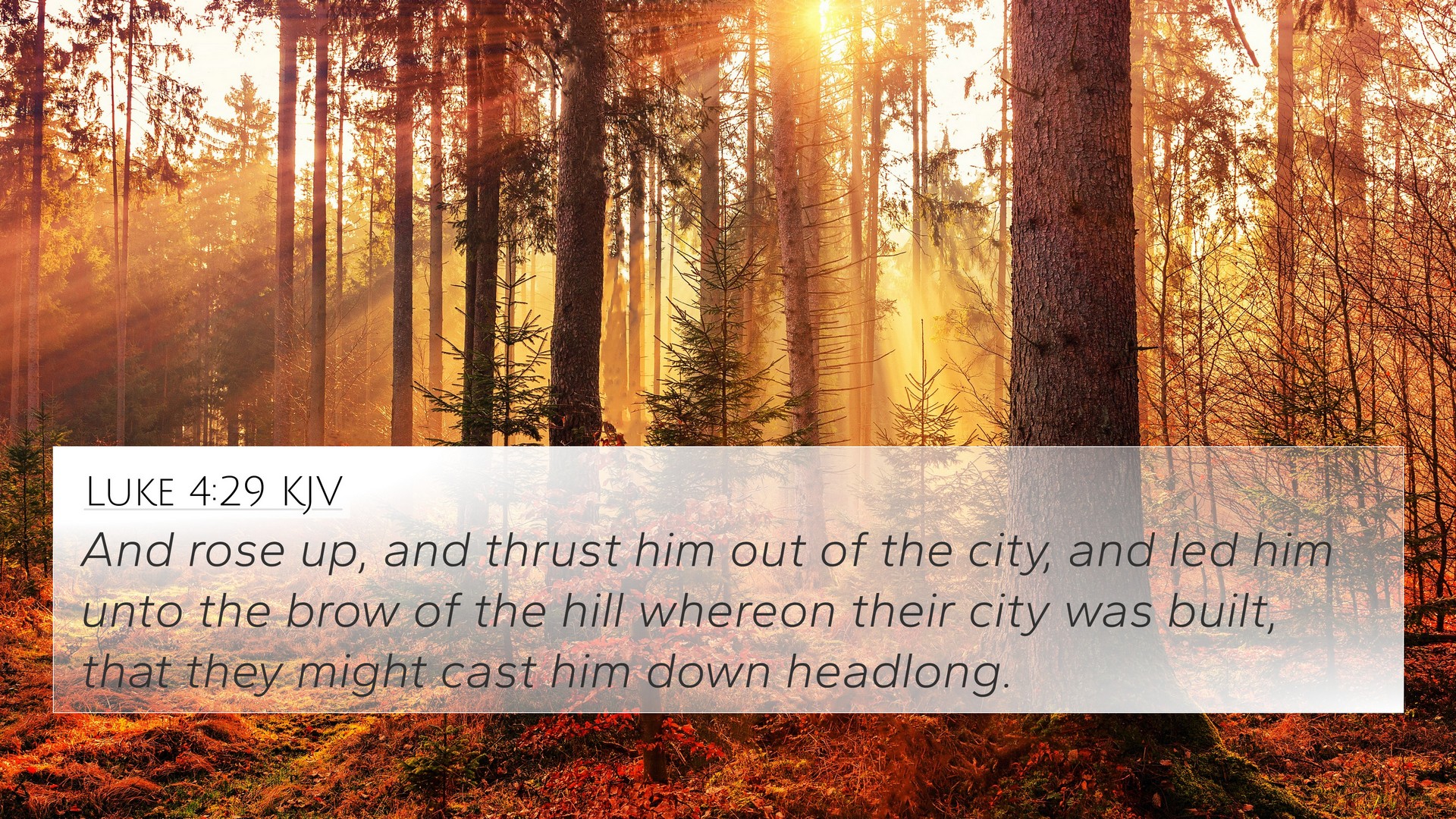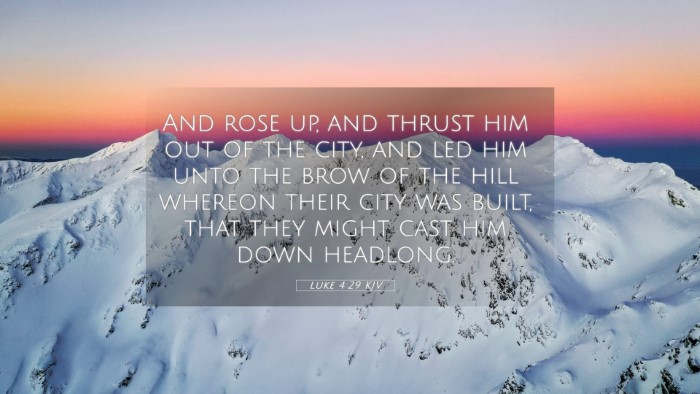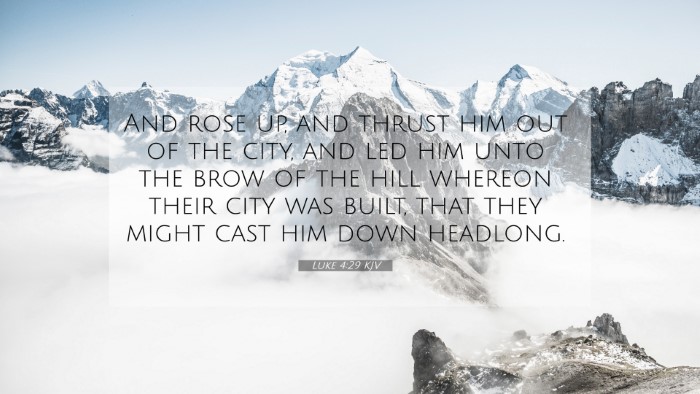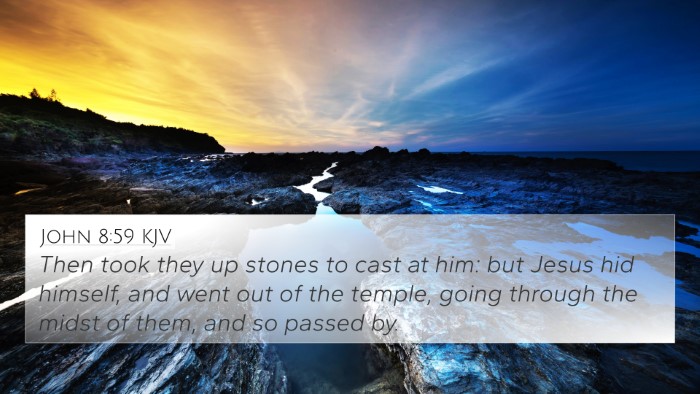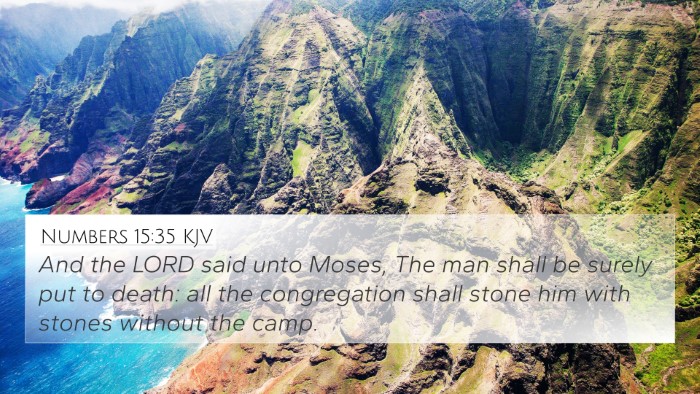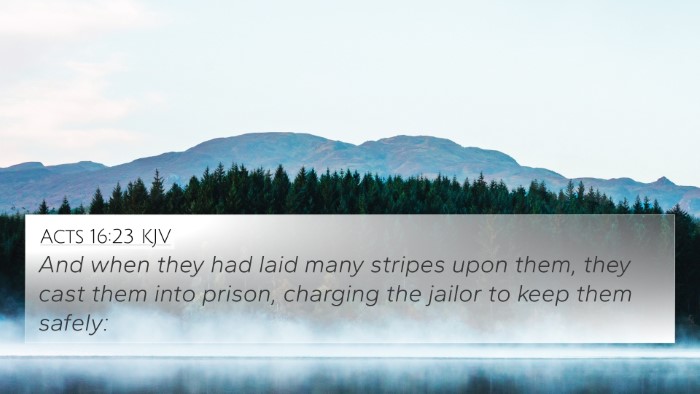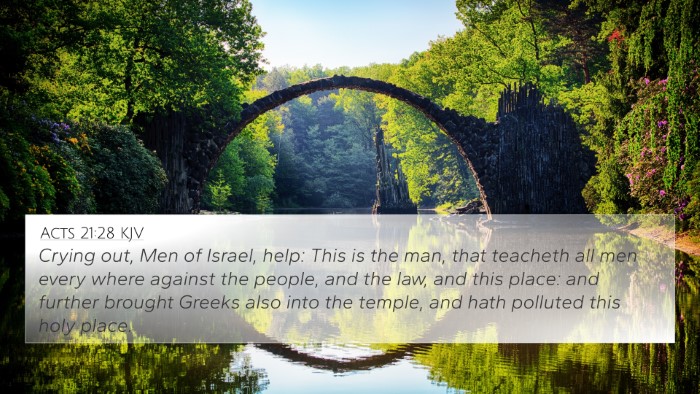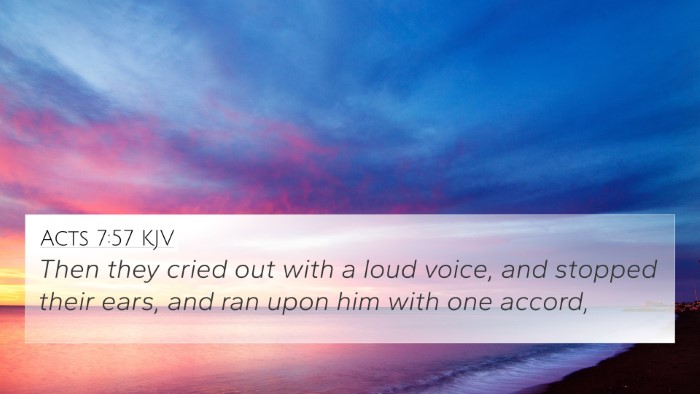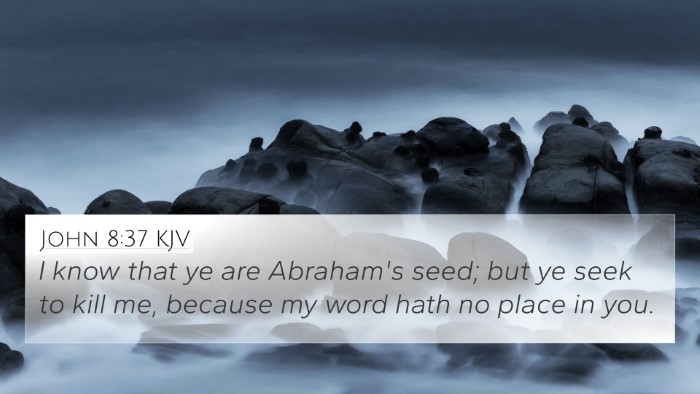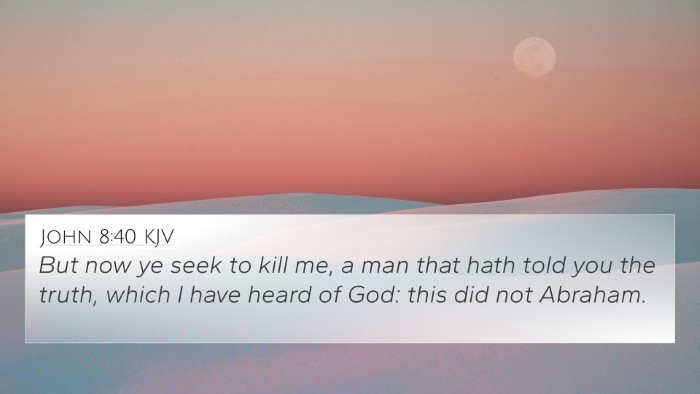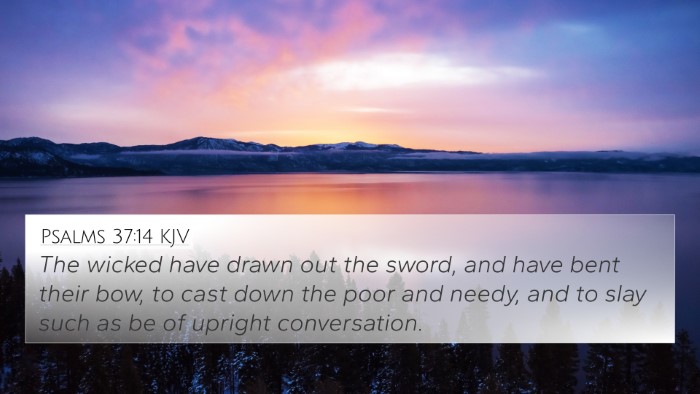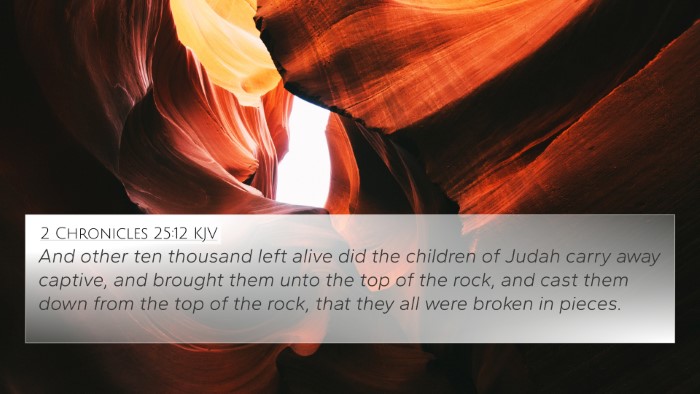Understanding Luke 4:29
Bible Verse: Luke 4:29 - "And rose up, and thrust him out of the city, and led him unto the brow of the hill whereon their city was built, that they might cast him down headlong."
Contextual Overview
The passage in Luke 4:29 occurs during a significant moment early in Jesus' ministry, specifically in His hometown of Nazareth. Jesus had just proclaimed that He had come to fulfill the prophecies of Isaiah regarding salvation. However, the townspeople reacted in anger and disbelief, ultimately leading to a violent attempt to rid themselves of Him.
Interpretation and Meaning
According to Matthew Henry, this verse illustrates the profound rejection that Jesus faced, even among those who should have been familiar with Him. His proclamation in the synagogue stirred the hearts of the people, but instead of embracing His message, they succumbed to envy and rage.
Albert Barnes elaborates that the act of leading Jesus to the brow of the hill signifies the depth of hostility toward Him. The townspeople's reaction highlights a broader theme in the Gospel of Luke regarding Jesus’ acceptance and rejection. It signifies the first taste of adversity Jesus would encounter as He continued His mission.
Adam Clarke points out the geographical and symbolic dimensions of this passage. Nazareth, perched on a hilltop, represents both a high point of Jesus’ early life and a reminder of the rejection He would endure. The act of casting Him down symbolizes a desperate attempt to silence the truth He proclaimed.
Thematic Connections
This verse serves as a pivotal moment that connects several themes in Scripture, particularly those of prophecy fulfillment, rejection, and the divine mission of Jesus. It ties back to the messianic expectations present in the Old Testament, as revealed in Isaiah and other prophetic writings.
- Cross-reference #1: Isaiah 61:1-2 - Jesus reads these verses in the synagogue, declaring His mission as the anointed one.
- Cross-reference #2: Matthew 13:57 - Discusses how Jesus was also rejected in His hometown, reinforcing the rejection theme.
- Cross-reference #3: John 1:11 - "He came to his own, and his own received him not," highlighting the disregard for Jesus by those closest to Him.
- Cross-reference #4: Luke 13:34 - Jesus laments over Jerusalem, explaining His desire to gather them but receiving rejection instead.
- Cross-reference #5: Acts 7:51-60 - Stephen expresses the ongoing rejection of God’s messengers, paralleling the treatment of Jesus.
- Cross-reference #6: Mark 6:4 - Jesus’ sayings in Nazareth illustrate the concept of a prophet not being without honor, except in his own country.
- Cross-reference #7: Isaiah 53:3 - Prophesies the rejection of Jesus as the suffering servant, resonating with Luke 4:29's narrative.
Theological Reflections
This moment in Luke 4:29 challenges readers to reflect on their own receptiveness to divine truth. In a world where truth can often be uncomfortable, this passage serves as a reminder of the struggle between acceptance and rejection of Jesus' teachings.
Conclusion
In Luke 4:29, we witness an essential part of Jesus' journey—a moment that encapsulates both His mission and the inevitable opposition He would face. This verse not only enlightens our understanding of Jesus' early challenges but also invites us to explore the broader narrative of Scripture through various contextual and thematic connections.
Further Study
For those interested in a deeper dive into the connections within Scripture, exploring the tools for Bible cross-referencing can enhance comprehension. Resources like a comprehensive Bible concordance or a Bible cross-reference guide can illuminate the connections between the Old and New Testaments.
As you study, consider questions like, "How do these verses connect with each other?" or "What do they collectively reveal about the nature of Christ and His mission?" Engage in cross-referencing Bible study methods to uncover the layers of meaning that enrich our understanding of faith.
